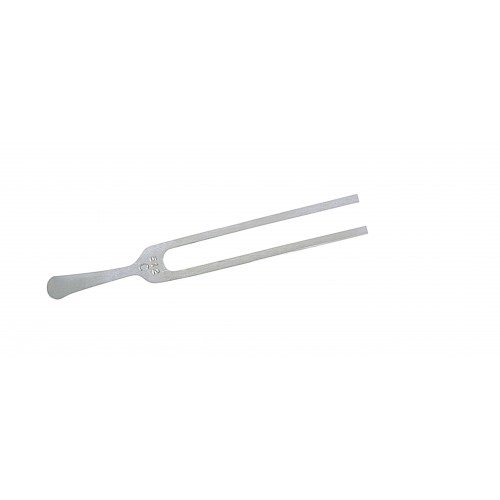
In primary care settings, the Rinne would be most effective as part of a screening program for conductive hearing losses, but not as the sole indicator for referral. Sensitivity for all groups was improved by interpreting equivocal results as indicating a conductive loss.ĭespite reports of poor reliability, the 512-Hz Rinne tuning fork test can be an important tool in an otology practice for the detection of conductive hearing losses and for confirming audiometric findings. Essential item for a variety of examination. Sensitivity was lower when masking was not used and lowest when the Rinne was performed by a less-experienced tester. Integral finger grip for general practice and diagnostic use. Results showed the 512-Hz Rinne tuning fork test could be very effective at detecting conductive hearing losses when performed by an experienced tester and when masking was used. Sensitivity of the 512-Hz Rinne tuning fork test was assessed by comparing tuning fork results with the pure-tone average air-bone gap. A tuning fork is an acoustic resonator in the form of a two-pronged fork with the prongs (tines) formed from a U-shaped bar of elastic metal (usually steel). The effects of tester experience, the use of masking, and the interpretation of equivocal (+/-) Rinne results on test reliability also were examined.ġ,000 adult patients (2,000 ears) seen for their initial otologic evaluation. The specific product details are listed in the description.This study aimed to examine the reliability of the 512-Hz Rinne tuning fork test to detect conductive hearing losses.

*Please note the manufacturer only provides a stock image for this product group. Made by: American Diagnostic Corporation ADC.This nonmagnetic tuning fork requires no plating and. Extra long 2" handle of turned smooth aluminum to facilitate bone conduction tests bar stock with smooth, aluminum turned handle approximately 1-3/4 in.Produced from 3/8" x 1" bar stock for superior performance and consistent frequency accuracy.Weighs 1/3 of comparable steel tuning forks Tuning Forks are of the finest quality aluminum alloy and have exceptional tone duration and superior sound.A vibrating tuning fork held next to the ear or placed against the skull will.

The vibrations produced can be used to assess a persons ability to hear various sound frequencies. In clinical practice, the 512-Hz tuning fork has traditionally been preferred. Tuning forks, will vibrate at a set frequency to produce a musical tone when struck.


 0 kommentar(er)
0 kommentar(er)
